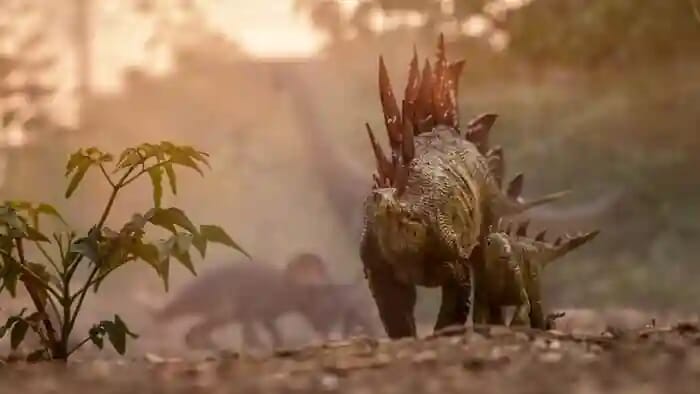Dinosaurs, those colossal rulers of the ancient world, may have held sway over the planet for more than 160 million years. However, the latest research suggests a rather surprising rationale behind their dominance - their method of locomotion. With adaptations for both bipedal and quadrupedal locomotion, they diversified and outperformed other organisms, becoming the dominant land vertebrates from the late Triassic period (251.9 million to 201.3 million years ago) until their extinction around 66 million years ago during the Cretaceous period.

In a recent study published in the Royal Society Open Science journal, researchers highlighted that the way dinosaurs walked, using both their hind legs and later adopting quadrupedal locomotion, provided them with a distinct advantage during periods of significant environmental upheaval.
Dinosaurs belong to the Avemetatarsalia group, evolving alongside the related reptilian group, Pseudosuchia, which includes ancestors of crocodiles. Both groups emerged in the Triassic period, following the Permian mass extinction event 252 million years ago.
Researchers utilized fossilized leg bones from 208 species of avemetatarsalians, pseudosuchians, and their close relatives to trace their evolutionary changes. When they first appeared, pseudosuchians exhibited greater diversity. Some pseudosuchians walked on their hind legs, but most still moved in a crawling manner.
Early dinosaurs were primarily bipedal and capable of running, not merely slow walking like their ancestors. The ability to move swiftly enhanced their ability to evade predators and capture prey, providing an advantage during the arid climate of the Triassic era.
"There was immense pressure on food availability. Somehow, dinosaurs, which were scarce for the first 20 million years, began to thrive, while pseudosuchians did not," said lead author Amy Shipley, a master's student in paleobiology at the University of Bristol, as quoted from Live Science.
"It is highly likely that early dinosaurs were adept at water conservation, much like many modern reptiles and birds. However, our evidence suggests that their greater adaptability in walking and running played a crucial role," she added.
By the end of the Triassic period, another mass extinction event wiped out most pseudosuchians, except for the crocodylomorphs that continued to thrive on four legs. Some dinosaurs retained their upright, bipedal posture, while others reverted to crawling, allowing for further diversification.
"After the mass extinction at the end of the Triassic period, we see the emergence of very large dinosaurs, some exceeding ten meters in length, many of which were quadrupedal, but still, many remained bipedal like their ancestors," noted study co-author Suresh Singh.
Their diversity in posture and walking styles made them incredibly adaptable, ensuring their success on Earth for a considerable period. While dinosaurs developed other traits that aided in their proliferation, such as temperature regulation through feathers and more efficient respiratory mechanisms, this research concludes that their locomotive strategies provided a crucial advantage.



